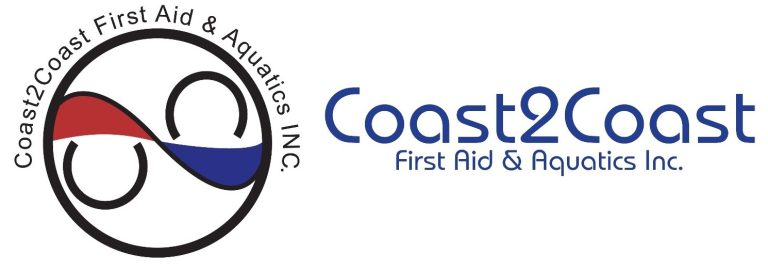IN THIS BLOG
IN THIS BLOG
- What is WHMIS Training?
- Who Needs WHMIS Training?
- When is WHMIS training required?
- What Types of Professions Require WHMIS Training?
- What does the WHMIS Training Include for hazardous materials?
- Types of WHMIS Training
- What is the Validity period of the WHMIS certificate?
- Who Provides the Training?
- Additional Workplace Safety Training
The Workplace Hazardous Materials Information System (WHMIS) is designed to ensure the safety of employers and employees performing their duties at their workplace, and the course is called WHMIS training. The training helps everyone understand the dangers and hazards of substances and chemicals used on the job.
During the WHMIS education, participants learn the critical elements of WHMIS, including the importance of labeling containers, providing material safety data sheets (MSDSs), handling hazardous products, occupational health, and the participation of everyone involved in education/training programs.
These are some of the answers to the most frequently asked questions about WHMIS training:
What is WHMIS Training?
WHMIS training is a comprehensive program designed to educate workers on the safe handling, use, and storage of hazardous materials in the workplace. This training is based on the Workplace Hazardous Materials Information System (WHMIS) legislation, which sets a national standard for classifying, labeling, and communicating information about hazardous products. The primary goal of WHMIS training is to protect Canadian workers from chemical hazards and ensure they can safely manage hazardous products. By understanding the risks and proper procedures, workers can contribute to a safer work environment.
Who Needs WHMIS Training?
According to several Acts and Regulations, all employees in Canada likely to have exposure to hazardous materials or those working with controlled products require WHMIS training. These Acts and Regulations include:
The Canadian Occupational Health and Safety Regulations (SOR/ 86-304), Part X, Hazardous Substances
Hazardous Products Act (HPA)
Controlled Products Regulations
Hazardous Materials Information Review Act
Additionally, the hazardous products regulations outline supplier responsibilities and compliance under the Hazardous Products Act and WHMIS in Canada. These regulations align with the Globally Harmonized System of Classification and Labelling of Chemicals and highlight recent updates and the transition period for compliance.
The basic requirements of these acts and regulations remain the same across the country. Still, some provinces and territories often included minor changes when integrating these into their workplace regulations for health and safety.
Complete WHMIS Training Today!
Inquire about WHMIS training and learn about the hazardous products at a workplace! Call our toll-free number to know more.
When is WHMIS Training required?
Employer Duties
Employers play a crucial role in ensuring workplace safety, especially when it comes to hazardous materials. Under WHMIS legislation, employers are required to develop and implement a WHMIS program tailored to their specific workplace. This includes providing WHMIS education and training to all workers who may be exposed to hazardous products. Employers must ensure that workers understand the hazards associated with the products they handle and know how to use them safely. Additionally, employers are responsible for providing up-to-date safety data sheets (SDSs) for all hazardous products and ensuring these products are properly labeled. Consulting with the health and safety committee or representative on WHMIS-related matters is also a key responsibility to maintain a safe working environment.
Worker Duties
Workers also have significant responsibilities under WHMIS. Those who may be exposed to hazardous products must actively participate in health and safety programs, such as WHMIS education. They are required to follow safe work procedures for handling and using hazardous products and must wear personal protective equipment (PPE) as needed. Reporting any incidents or spills involving hazardous products to their supervisor or health and safety representative is crucial. Additionally, workers should participate in workplace inspections and audits to help identify and mitigate potential hazards. By fulfilling these duties, workers contribute to a safer and healthier workplace.
What Types of Professions Require WHMIS Training?
When a product used or handled in the workplace has one of the usual danger symbols defined by the WHMIS, everyone working there, including the employers, requires training. In addition, some symbols usually used for personal or household purposes may be partially exempt. Typically, most factory workers – those in the automotive industry, cleaners, contractors, healthcare workers, laboratory workers, and those in the food and retail industry – need a WHMIS certificate.
Understanding hazard classes and workplace labels is a fundamental part of WHMIS education for these professions.
Additionally, any temporary workers like co-op students and interns, volunteers, teachers, and students likely to come into contact with hazardous materials need WHMIS training.
As you can see, the list is general and incomplete; you cannot just assume you don’t need the training if you work in another industry. However, as a rule, most Canadians work in environments where they could come into contact with chemicals or hazardous substances.
What does the WHMIS Training Include for hazardous materials?
The correct WHMIS training includes both general and site-specific training. During the general training, participants learn all the regulations, how to read and apply labels, MSDSs, controlled products, symbols, etc.
A crucial part of this WHMIS course is understanding the importance of a safety data sheet (SDS) in ensuring the safe use, handling, and storage of hazardous products. Employers are responsible for obtaining a current supplier SDS, which complies with federal regulations, to inform workers about potential hazards and safe handling procedures.
With site-specific or work-specific training, employers and employees learn how to work safely with the controlled products used in their workplace, where to find personal protective equipment and MSDSs, and the proper training for specific work procedures.
Types of WHMIS Training
Since generic WHMIS training includes foundational information on WHMIS legislation and safety related to hazardous products, participants can complete an online, video, or in-class course.
However, the site-specific training contains information unique to each different work environment and hazardous products. Therefore, the training takes place directly in the workplace or worksite.
Nearly all Canadian workers need general WHMIS training. However, it is up to owners to determine the need for workplace-specific WHMIS participation. All employers should consider the risk of hazardous material or chemical exposure, provide WHMIS training for their employees if necessary, and ensure it is updated with regular refresher training.
Workers who have not received the WHMIS training should immediately inform their supervisor, employer, or health and safety committee.
Choose Your Training Facility
What is the Validity period of the WHMIS certificate?
Companies should review their WHMIS program at least once a year. However, if changes occur in the work conditions or extra information is required, they should do it more often to ensure everyone has the correct knowledge and training.
Employers must ensure that everyone in their organization can answer the following four questions correctly; otherwise, they need WHMIS training:
1) Where is standard hazard information available?
2) What are the dangers of the controlled product used?
3) How are they protected from the hazards of any products used?
4) What must they do in case of an emergency?
If the answers to these questions indicate gaps in their knowledge, then employees need re-training. Therefore, the recommended period for WHMIS training is at least once a year. Additionally, new employees should complete a WHMIS course, and the employer must ensure everyone has it.
Furthermore, individuals or self-employed professionals can also take the course.
Who Provides the Training?
WHMIS trainers must meet the general requirements of the HRSDC and Health Canada. Even though the responsibility rests on the employer to ensure training, the proper training in both the general and site-specific categories can provide a safer workplace for all.
As an employer, your duty remains to organize WHMIS training today with a reputable provider, ensuring everyone in your workplace knows all the safety procedures required when working with chemical hazards. Remember: since most places have some form of hazardous substances, almost everyone needs WHMIS training.
Additional Workplace Safety Training
Businesses that are covered by the Workplace Safety and Insurance Act (WSIA) must have trained personnel and first aid equipment on their premises. First aid certification must be completed by the required number of workers for all businesses, including shop assistants, factory workers, secretaries, servers, managers, and volunteers.
Usually healthcare workers and medical professionals are required to complete First Aid & CPR training. This category includes doctors, nurses, medical assistants, paramedics, and other rescue workers like lifeguards and ski patrols. In addition to medical professionals, those in childcare, law enforcement, firefighting, sport coaching, construction, correctional services, flight attendants, security, electrical and more may require first aid & CPR training.
At Coast2Coast, we offer a variety of First Aid Course options so that you can find the one that best meets your needs. Our online blended learning format allows you to complete your theoretical study at home before attending an in-person session. Coast2Coast is a Canadian Red Cross training partner with experienced trainers that provide WSIB-approved certification. With 18 locations across Ontario, you can easily find a First Aid & CPR training course near you. If you have questions about any of our courses, please reach out to us and we would be happy to help.





















